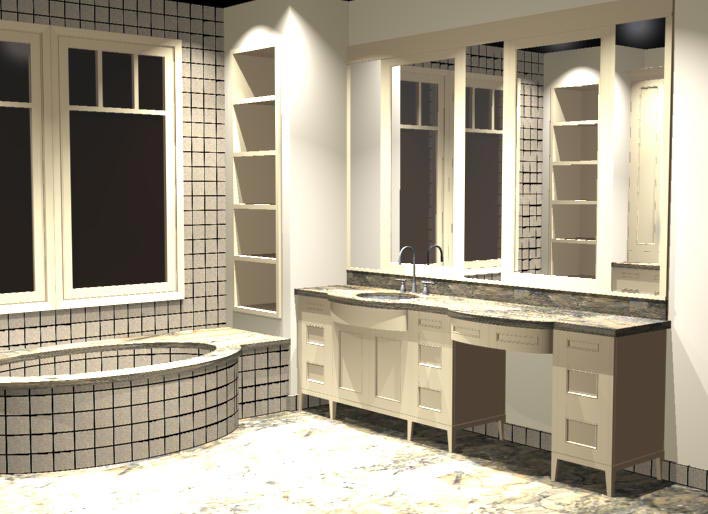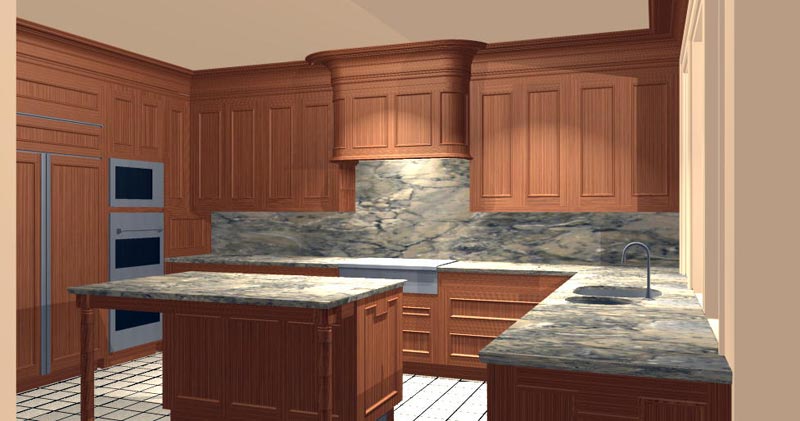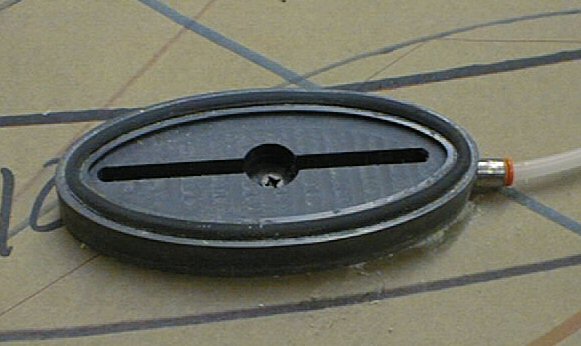Question
Contributor T, I'm not a power user. I used a small CAD program in the early 90s. I tried TurboCad in the mid-90s when I wanted more tools, and I ended up with IntelliCAD when I didn't like turbo. But I never came close to using it fully.
I've been interested in your comments on programs but never really appreciated how an interface would make much difference - it didn't in the three that I'd tried.
I recently found a copy of the old Ashlar DrawingBoard and have been reading through the guide. Wow. I'm beginning to understand what you'd been saying; the tools and interface really are different. I particularly like the assistant and parametric dimensioning (rough out a geometry, dimension it to the dimensions you want it, and the program redraws it to match).
Forum Responses
From contributor T:
With parametrics, you create a 3D image and then make snapshots of the different elevations and sections from the 3D model, then you dimension and create a plot page. To create the cumulative changes, you must do so to the 3D image, meaning you must discard the snapshots, dimensions and plot page. Then you make the change to the 3D image, which will resize automatically, but you must create new snapshots for the other images and then dimension and create a plot page again. Very time consuming. What you can do with a 3D parametric drawing is just this side of amazing, but don't forget that a good 2D program will allow you to create accurate images in 3 dimensions the first time. When changes occur, you copy the original and insert the desired change (much easier). If you like being responsible for all the work from drawing to the saw, then parametrics are for you, but now you have pieces with matching numbers and the cabinet man becomes an assembler and you become a program operator. I have used Pytha 3D with amazing reality, but at a cost of $12K not counting the optimizer to communicate with the saw and print labels - another $6K. You will not recoup your cost for some time and the program as 2D is a real bear, and curves are not impossible, but very involved. The learning curve is very steep and to hire someone with this expert knowledge is going to be expensive. I have yet to see a cabinet man build cabinets from a 3D image, but I must admit that making a movie of the job with surround sound and inserts of accessories from the client's own collection is impressive, but that only gets you a check to proceed with the real engineering. Now you have to spent a lot of money just to impress the customer when I can still do that with a pencil.
By doing this work in 3d, I now have my manufacturing info, with less work and more accuracy, I believe, than if I had to develop this info by calculating it off a 2d drawing.
As for parametrics, I'm not a strong believer for my needs, because it lacks versatility. It works great if you set it up for standard work, but there seems to be a diminishing return if you want to make small quantities of unique items.
I changed over 1 1/2 years ago from 2d acad and Excel spreadsheets to 3d acad and smartlister and have been very happy. The combination of the 2 programs have worked great. I can model just about anything the designer can think up in a reasonable amount of time and I can do this not with formulas but more as if I were building it right on screen. When that is done, I can produce all the plans, elevations, sections, details and fairly realistic renderings, not to mention the cultists, in a short amount of time - all in acad without the expensive cabinet programs. For me, changing to 3d has been a very good decision and has improved our drawings, our production, and our reputation.
I'm also attaching a rendering of some cabinets from part of a job we are starting to work on now. We just started dealing with rendering a couple of months ago, but we're getting a handle on it and it is definitely helping us deal with design issues with the architects and designers.
As for your comment about Solidworks, I am not real familiar with it, but I believe that it, like most of the other programs out there, is less efficient at one of a kind items. I have checked out a lot of cad and cabinet programs and as I see it, while parametrics is at the heart of almost all the programs and is a good way to go if you are building standard products, it is much easier to virtually build the products by drawing them and then extracting the manufacturing info right from the drawing . The system we are using is not a supposed turnkey package like a lot of the other "cabinet programs" and does require some setup to get things automated. I was still able to start producing with it within a couple of months, with most of that time devoted to learning acad and how to work in 3d and set up plotting.

Click here for full size image
Here is another of our earlier renderings for the kitchen in a project we just finished. Can you tell I'm excited about our renderings?

Click here for full size image
As for the renderings, you're right. We do not build off these, but use them as a communication tool along with the shop drawings to help everyone involved visualize the finished product. There hasn't been any programming involved yet, but only the setting up of templates and procedures plus a few macro buttons I worked out to automate some tasks. Dave at Smartlister is trying to put together some code to improve these ideas and incorporate them as enhancements to his program to help set up and automate the drawing process. So for programming cost, you'd have to talk to him. I'm sure he could give you an earful. As for me, all I know about lisp is it makes my sss's sound funny.
In addition to adding some of the sectioning features that contributor K has mentioned, I am hoping to add a little parametric ability in the future to help with, in particular, arched doors. When working with 3D solids and 5 piece arched doors, you cannot stretch the top rail with my software. This can be a real pain if you have to change door styles and/or sizes. Is it doable? You bet! Does it make you unhappy about the extra work? You bet!
It is real important for me to not interfere with the design process. I would certainly hope that a design is not created because it is the easiest to draw, but sometimes this is the case. When you go from an arched recessed panel door to a cathedral-arched raised panel door, the required modeling time and modeling expertise is much higher. Being as such a door is easily mathematically defined and the programming interface is there and ready to use, I think it would be a good idea to automate this process as much as possible. Lest a good designer/detailer sway a client to an easier design because he does not want to or cannot model the more complicated items.
Currently, I am in the process of creating free 3D libraries of cabinets and hardware. Even though I do not build cabinets like you do, I am hoping it will give people something to play with and see the potential. Of course, the hardware and appliance items will still be useful. People tend to give themselves a few days to try my software, but then they do not have any custom libraries to experiment with. As a result, they cannot easily see the potential result without creating their own. By the time they realize they need to do that and set the time aside, the demo is expired.
Another thing I wanted to note, and this is something contributor K showed me, is that when you do the renderings with wood grain, if you map the grain direction and scaling on every piece of a blocked out cabinet and have it attached by layer and then delete the materials, the parts retain the grain direction. If your template file already has a floor, lights and basic materials attached by layer, when you bring in your library items, you can do a rendering immediately! You may want to make a few minor adjustments or change materials, but this only takes a minute or two and no matter how you move, stretch or rotate the cabinets, the grain direction is correct. This discovery is huge! Once you know how to do it and have the scale of the bitmap or targa set properly, high quality renderings are a blow and go process.
I am aware of the benefits of 3D and have created some amazing projects, but doing the design work for the customer brings in lots of revisions and changes because the client is getting all of this engineering done for them, hence all the routines to handle revisions, changes, etc. Simply, is it paying off?
I am considering Microvellum. How is Smartlister different? (Other than price!) I've seen your demos, and they are cool. Are both programs Excel based? What would I gain from your program that I wouldn't get from MV? And to be fair, what do I get from MV that Smartlister doesn't provide? Your post regarding parametrics was well worth the read. Gonna give a copy of it to my boss. Maybe he'll listen to you!
I cannot really tell you that you will gain anything with either, as I am not familiar with what you do. Other than the fact that they both use AutoCAD, they are completely different in their approaches and learning time. They both do things the other does not, but whether or not that is advantageous to you is another story. I suspect that if you buy Microvellum you may still want some of the features of SmartLister and if you buy SmartLister you may want some of the features of Microvellum. I think Microvellum is a quality company and I have rarely heard anything negative about them. They are honest and quality people and if you decide to buy their product I am sure you will be in good hands.
If you need software, then you should set aside the time to fully demo them. Do not take anyone’s word for what you need. Their advice and suggestions are always good, but it is up to you to make the right choice and you cannot do that without actually doing a full test drive.
99% of the people who buy our software do so after trying, buying and using several different programs. They usually do not understand the importance of why we do things the way we do until they have learned what and why everyone else does the things the way they do. Once they fully understand the realities of detailing software for this industry and if nothing has met their needs, then they give us a look with an intelligent and educated eye.
I did not create SmartLister to sell it. I created it for me. I started selling it to pay for programming costs because I do not program at all. Yes, I hope to make money at it, but I am not so sure I ever will. I am not a salesmen and I am not interested in selling you something you do not need. If you need SmartLister, you will know it. Unfortunately for me, I have difficulty explaining in 3 minutes why my approach is superior to another product. I came to the conclusion of what I needed after years of detailing and using other programs. It is really hard for me to wrap that up in a nice little sales pitch and have someone grasp the full meaning of my words. The creation of SmartLister was an act of desperation. It only exists because of my persistence and determination to find a solution that worked the way I wanted software to work. This is one of the reasons some of our customers have bought it. They believe in the concepts and me. You would have had to see to first builds to really appreciate this fact, as the functionality was so minimal. Take them both out for a test drive. While you are at it, try some others, too.
